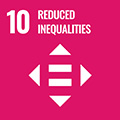- Docente: Meri Raggi
- Credits: 10
- SSD: SECS-S/01
- Language: Italian
- Moduli: Meri Raggi (Modulo 1) Silvia De Nicolò (Modulo 2)
- Teaching Mode: Traditional lectures (Modulo 1) Traditional lectures (Modulo 2)
- Campus: Bologna
- Corso: First cycle degree programme (L) in Business Administration (cod. 8871)
-
from Nov 12, 2024 to Mar 20, 2025
-
from Apr 10, 2025 to May 23, 2025
Course contents
MODULE 1: Statistical variables. Population and sample. Collecting and organizing data. Data set and frequency distributions. Graphic representations. Mean values, mode, median and quantiles. Eterogeneity, variability and inequality measures. Shape: asimmetry and curtosis. Bivariate statistical analysis. Relationships between variables: statistical dependence, covariance and linear correlation. Simple linear regression. Introduction to sampling and statistical inference. Bayesian theorem. Random variables and probability distributions. Sampling. Point and interval estimation. Hypothesis testing. Linear regression models.
MODULE 2: Introduction to R. Basics of the R language and its syntax, as well as basic objects and their structure.
Basics of the BlueSky Statistics software: Integrating R code, importing data, visualising and cleaning data.
Statistical analysis with R and BlueSky Statistics. Application of statistical methods seen in module 1 on real data (both descriptive and inferential methods):
Frequency tables and descriptive statistics,
Graphical representations,
Theoretical and empirical exploration of the main probabilistic distributions,
Association and linear regression model.
Software used can be downloaded free of charge at the following link: https://www.blueskystatistics.com/support
Readings/Bibliography
Student could chose a book in statistics. Some example are:
Module 1:
Borra S., Di Ciaccio A. (2020). Statistica, metodologie per le scienze economiche e sociali, McGraw-Hill.
Levine D.M., Szabat K., Stephan D.F. (2018). Statistica, Pearson.
Piccolo D. (2010.) Statistica, Il Mulino.
Sullivan M., Zavarrone E. (2015). Fondamenti di statistica, Pearson.
Module 2:
Leva F., Masci C., Paganoni A.M., Laboratorio di statistica con R, Pearson, 2016, Milano. ISBN 8891901520
Additional teaching material will be available at e-learning Platform VIRTUALE
Teaching methods
lessons and exercises in class
Use of the VIRTUAL e-learning platform [https://virtuale.unibo.it/course/view.php?id=15904] to evaluate your preparation.
Assessment methods
The Statistics (Total) Exam consists of two tests: a written test and an oral test.
Each written test contains 3-4 exercises that include practical and theoretical questions (part related to module 1) + 2 commenting exercises on some R/BlueSky Statistics outputs (part related to module 2).
During the test, a formulary will be handed out, which is the only material that can be consulted. Other types of notes are not allowed. The use of a calculator is allowed. The maximum time allowed for the test is 2 hours.
The two parts relating to Module 1 and Module 2 will be marked separately and each part will receive a separate mark. The examination will be failed if a mark of less than 16 is obtained in either (or both) modules.
The oral examination is compulsory for those who have obtained a pass mark but less than 20 thirtieths in the written examination for either module (or both). The oral examination will cover the topics of the module in which the mark was less than 20 (one module or both modules in the same oral examination).
It covers all topics in the syllabus and is designed to further test theoretical knowledge. The mark obtained varies from -3 to +3 and is added to the mark for the written work. The oral examination must be taken in the same session as the written examination.
For the written test, the student can choose to take 3 partial tests or a total test.
For the total course mark, the part relating to the first module will weigh 80% while that relating to the second module will account for 20%.
Teaching tools
Elearning with VIRTUALE platform
Office hours
See the website of Meri Raggi
See the website of Silvia De Nicolò
SDGs


This teaching activity contributes to the achievement of the Sustainable Development Goals of the UN 2030 Agenda.
